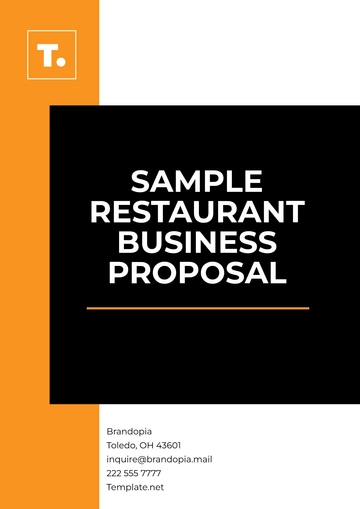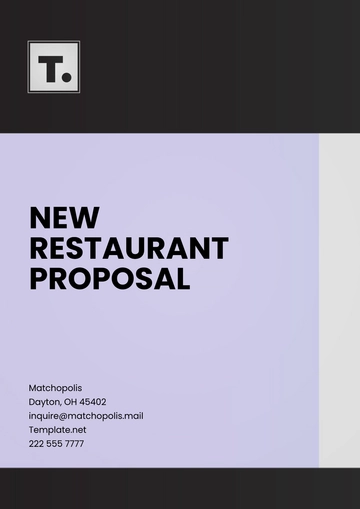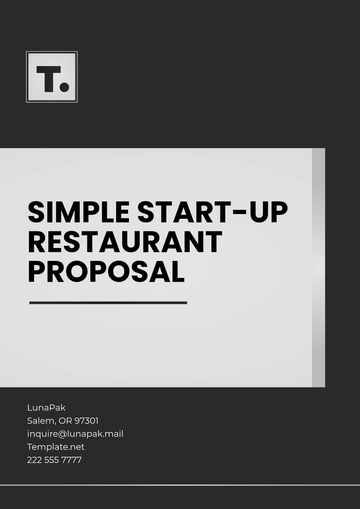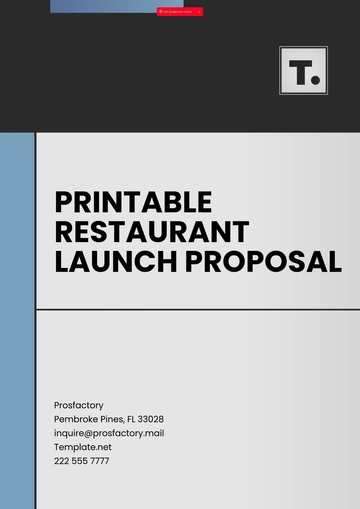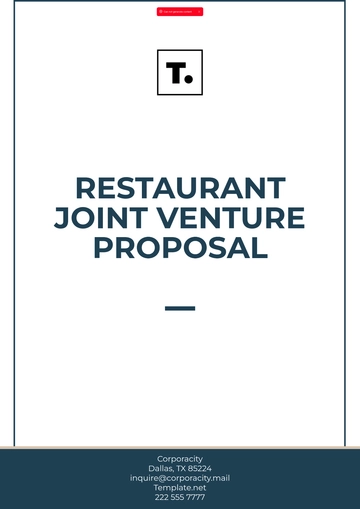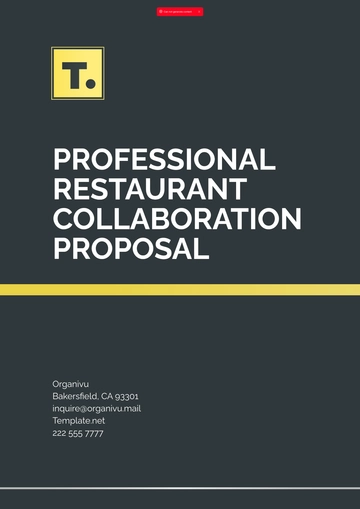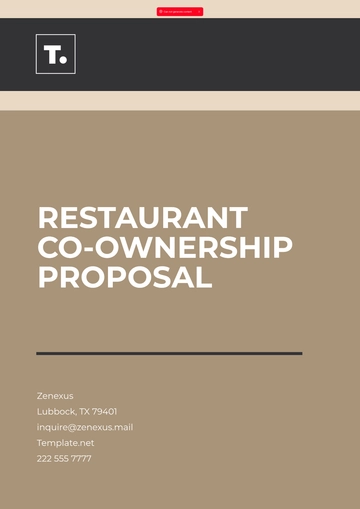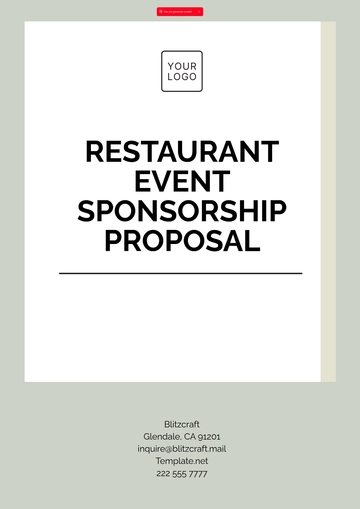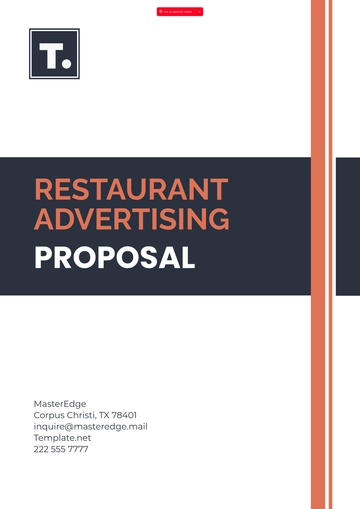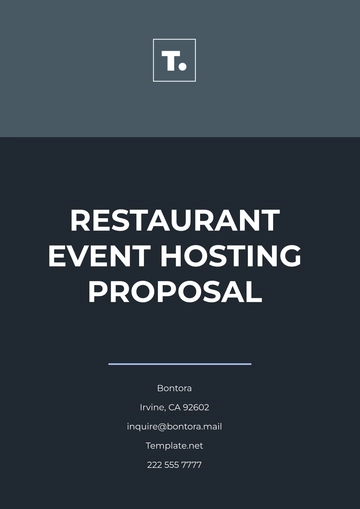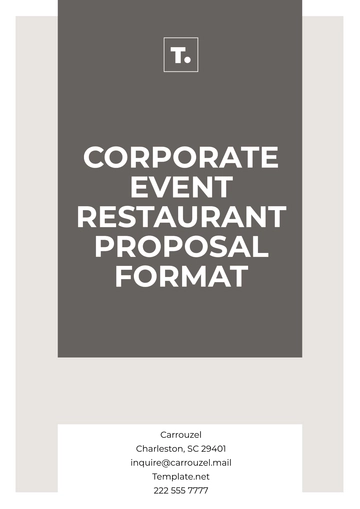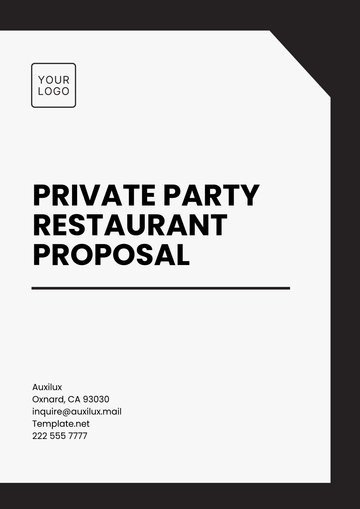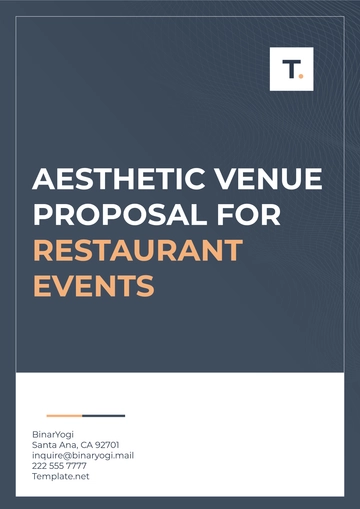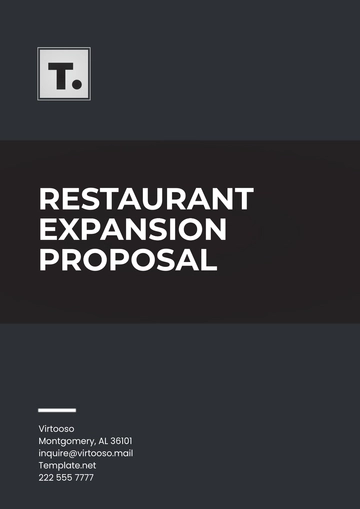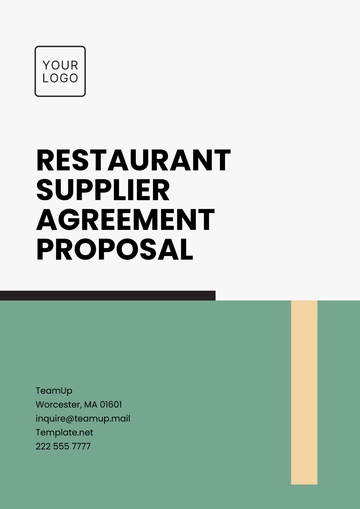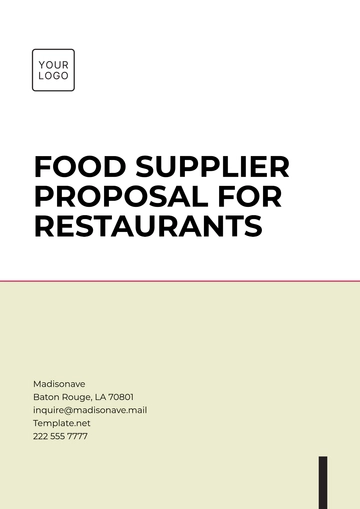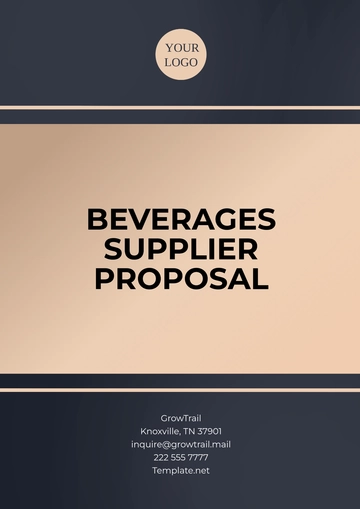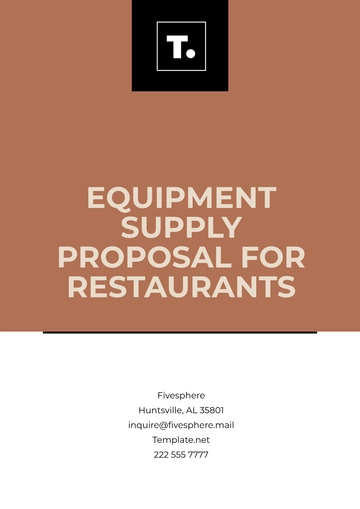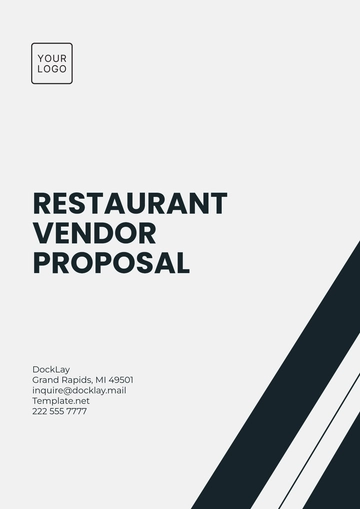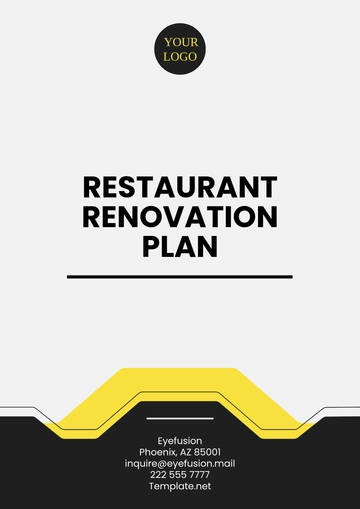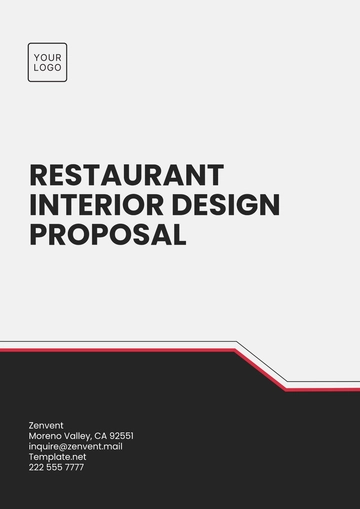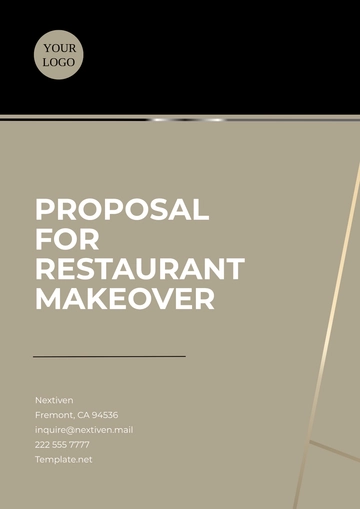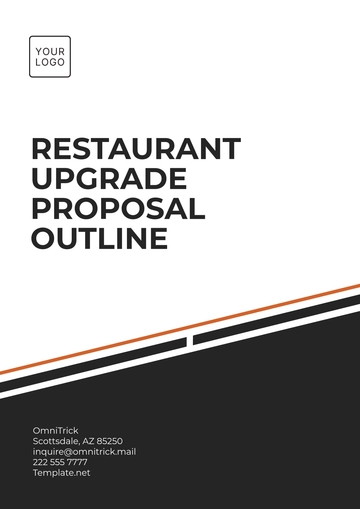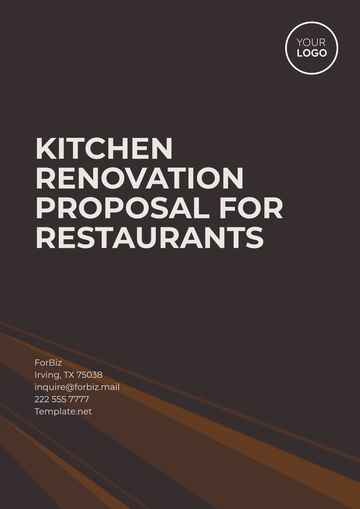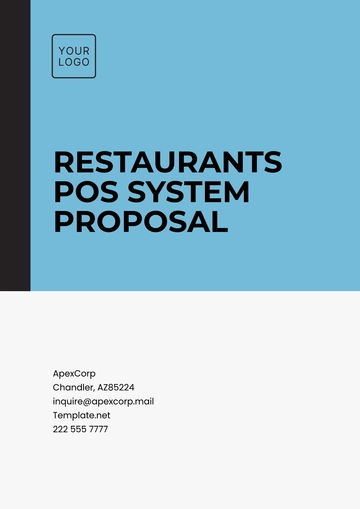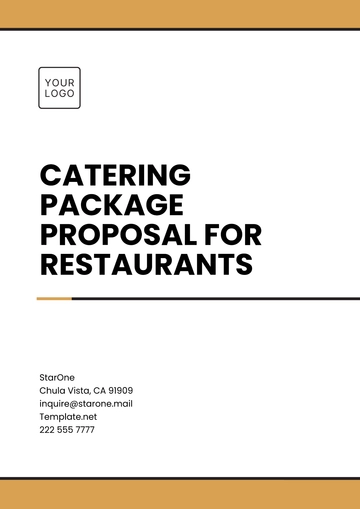Free Restaurant Sales Proposal
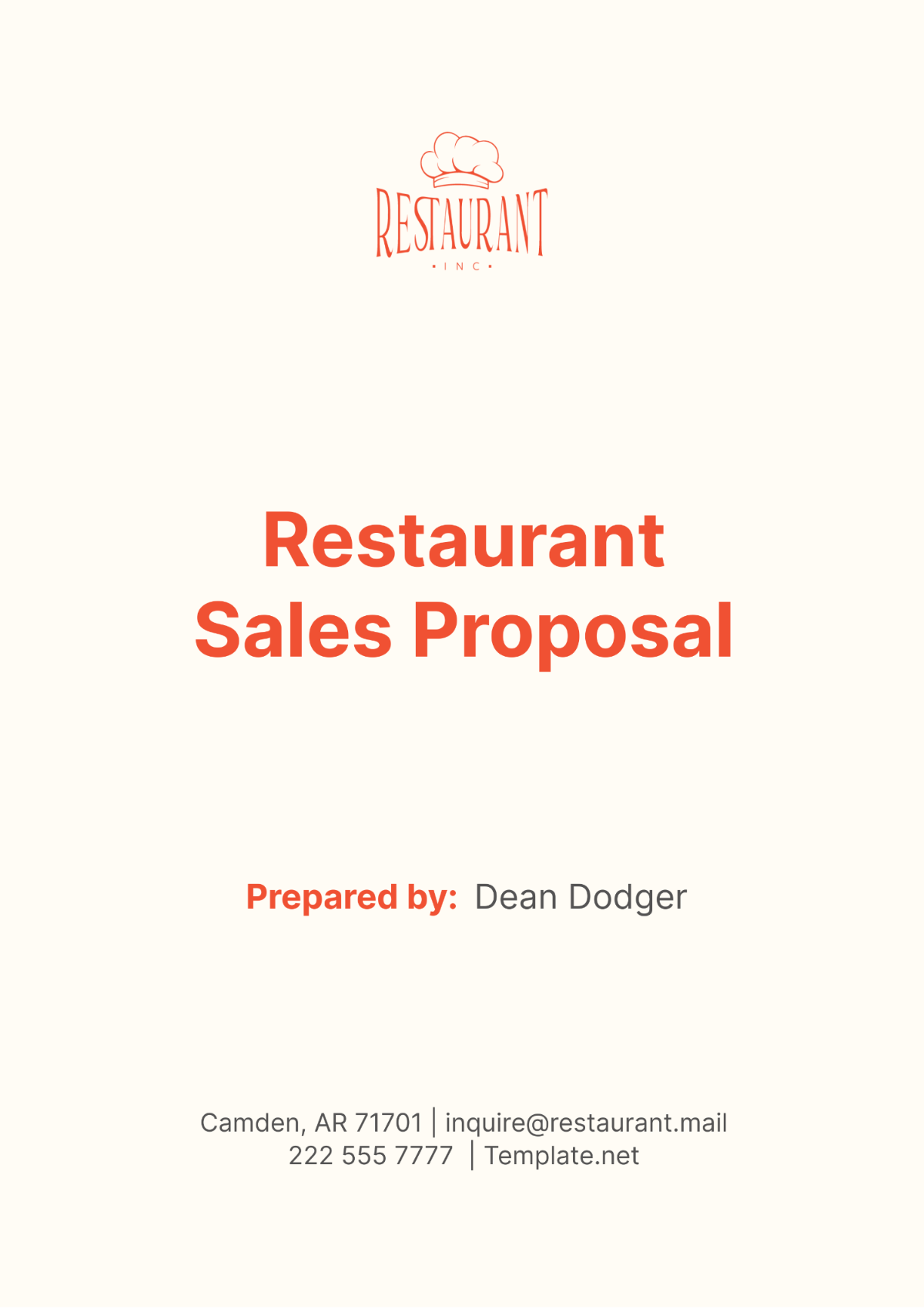
I. Executive Summary
We are a modern, upscale restaurant specializing in farm-to-table cuisine with a focus on fresh, locally sourced ingredients. Our restaurant offers a unique dining experience that combines high-quality food, exceptional service, and a warm, inviting ambiance. Our goal is to create a memorable experience for our guests that keeps them coming back. We are currently seeking investment to expand our operations and enhance our offerings.
Objectives
Secure $500,000 in investment to fund enhancements.
Increase annual revenue by 20% within the next year.
Open two new locations within the next 18 months.
Achieve a customer satisfaction rate of 95%.
II. Company Overview
We were established in [Year] by a team of passionate culinary professionals and business experts. Our mission is to provide an exceptional dining experience that emphasizes sustainability and quality. We operate as a Limited Liability Company (LLC), which provides flexibility and protection for our owners. Our management team consists of experienced professionals who bring a wealth of knowledge in restaurant operations, culinary arts, and business management. Our dedication to excellence has earned us a loyal customer base and strong community presence.
III. Market Analysis
A. Industry Overview
The restaurant industry is a significant contributor to the economy, generating over $900 billion annually in the United States. The market is experiencing steady growth, with a projected annual increase of 4%. Consumer preferences are shifting towards healthier, locally sourced, and sustainably produced food options. The fast-casual dining segment, in particular, is expanding rapidly, driven by demand for high-quality, convenient dining experiences. This trend aligns with our farm-to-table concept, positioning us well within the market.
B. Target Market
Our target market includes urban professionals, families, and food enthusiasts who value high-quality, locally sourced food in a modern and inviting atmosphere. These groups are characterized by their willingness to spend on premium dining experiences and their preference for sustainable and ethical food practices.
Demographics | Needs |
|---|---|
Age: 25-50 | High-quality, locally sourced meals |
Income: $60,000+ | Premium dining experiences |
Urban Professionals | Quick, convenient, yet upscale dining |
Families | Kid-friendly options and comfortable seating |
Food Enthusiasts | Innovative and unique menu offerings |
C. Competitive Analysis
Our competitive landscape includes several well-established restaurants, each with its strengths and weaknesses. Understanding their market share and positioning helps us identify our unique advantages.
Competitor | Share | Strengths | Weaknesses |
|---|---|---|---|
A | 20% | Brand recognition | High prices |
B | 15% | Marketing campaigns | Service quality |
C | 10% | Menu options | Sustainability |
Our restaurant stands out due to our commitment to quality, sustainability, and a superior dining experience. We occupy a unique niche by emphasizing locally sourced ingredients and innovative menu offerings, which resonate with our target market.
IV. Restaurant Concept and Offerings
A. Menu and Services
Our menu is crafted to provide a diverse range of dishes that highlight fresh, locally sourced ingredients. We aim to offer a memorable dining experience that caters to various dietary preferences and tastes.
Appetizers
Seasonal Soup
Farmhouse Salad
Artisan Cheese Board
Crispy Calamari
Entrees
Grilled Salmon with Quinoa Salad
Herb-Roasted Chicken with Seasonal Vegetables
Grass-Fed Beef Burger with Sweet Potato Fries
Vegan Mushroom Risotto
Desserts
Flourless Chocolate Cake
Seasonal Fruit Tart
House-Made Ice Cream
Beverages
Craft Cocktails
Local Craft Beers
Organic Wines
Freshly Squeezed Juices
B. Ambiance and Experience
Our restaurant offers a modern, welcoming ambiance that enhances the dining experience. The interior design features natural materials and earth tones, creating a warm and inviting atmosphere. Comfortable seating, soft lighting, and tasteful décor contribute to a relaxed yet upscale environment. Our focus on exceptional customer service ensures that every guest feels valued and enjoys their time with us.
C. Location
Our primary location is situated in a bustling downtown area known for its vibrant dining scene and high foot traffic. This prime location offers excellent visibility and accessibility, crucial for attracting our target demographic of urban professionals, families, and food enthusiasts. The proximity to office buildings, residential areas, and entertainment venues further enhances our potential to draw in a diverse and steady stream of customers.
V. Sales and Marketing Strategy
Our sales and marketing strategy aims to build brand awareness, attract and retain customers, and drive revenue growth. We will leverage a mix of digital and traditional marketing channels, focusing on our unique selling points of quality, sustainability, and exceptional customer experience.
Digital Marketing: Utilize social media platforms (Instagram, Facebook, Twitter) to showcase our menu, promote events, and engage with customers. Implement SEO and PPC campaigns to increase online visibility and attract new customers.
Traditional Advertising: Use local print media, radio spots, and outdoor advertising (billboards, transit ads) to reach potential customers in the area.
Community Engagement: Host and sponsor local events, participate in community activities, and collaborate with local businesses to build strong community ties and enhance brand reputation.
Customer Loyalty Programs: Develop and implement a customer loyalty program that rewards repeat customers with discounts, special offers, and exclusive event invitations.
Public Relations: Engage with local media to secure press coverage and leverage influencers to review and promote our restaurant.
Email Marketing: Send out regular newsletters with updates on menu changes, special promotions, and events to keep customers informed and engaged.
VI. Financial Projections
A. Revenue Projections
Our revenue projections are based on conservative estimates and industry benchmarks. We anticipate steady growth over the next five years, driven by increased brand awareness, customer retention, and expansion.
Year | Projected Revenue (USD) |
|---|---|
1 | $1,500,000 |
2 | $1,800,000 |
3 | $2,100,000 |
4 | $2,400,000 |
5 | $2,700,000 |
The projected revenue growth reflects our marketing efforts and planned expansions, aiming for a 20% increase in annual revenue within the first year and maintaining a consistent growth rate thereafter.
B. Cost Analysis
Our cost analysis includes a breakdown of startup and operating costs, highlighting areas where investment is necessary and potential savings can be achieved.
Expense Category | Year 1 (USD) | Year 2 (USD) | Year 3 (USD) | Year 4 (USD) | Year 5 (USD) |
|---|---|---|---|---|---|
Utilities | $200 | $210 | $220 | $230 | $240 |
Labor Costs | $500 | $550 | $600 | $650 | $700 |
Marketing | $100 | $110 | $120 | $130 | $140 |
Inventory | $300 | $330 | $360 | $390 | $420 |
Maintenance | $50 | $55 | $60 | $65 | $70 |
Miscellaneous | $50 | $55 | $60 | $65 | $70 |
Total | $1,200 | $1,310 | $1,420 | $1,530 | $1,640 |
Note: in thousands
Our costs are expected to rise in line with revenue growth, driven primarily by labor costs and inventory. Efficient cost management will be crucial to maintaining profitability.
C. Profit and Loss Statement
Our projected profit and loss statement outlines the expected profitability of the restaurant over the next five years.
Year | Revenue (USD) | COGS (USD) | Gross Profit (USD) | Operating Expenses (USD) | Net Profit (USD) |
|---|---|---|---|---|---|
1 | 1,500,000 | 600,000 | 900,000 | 1,200,000 | (300,000) |
2 | 1,800,000 | 720,000 | 1,080,000 | 1,310,000 | (230,000) |
3 | 2,100,000 | 840,000 | 1,260,000 | 1,420,000 | (160,000) |
4 | 2,400,000 | 960,000 | 1,440,000 | 1,530,000 | (90,000) |
5 | 2,700,000 | 1,080,000 | 1,620,000 | 1,640,000 | (20,000) |
The P&L statement shows that we expect to incur losses in the first few years due to high initial costs and investments. However, we anticipate moving toward profitability by Year 5 as revenue growth outpaces cost increases.
D. Cash Flow Statement
The cash flow statement projects the inflow and outflow of cash over the next five years, ensuring that we can manage our liquidity effectively.
Year | Operating Cash Flow (USD) | Investing Cash Flow (USD) | Financing Cash Flow (USD) | Net Cash Flow (USD) |
|---|---|---|---|---|
1 | 250,000 | (350,000) | 400,000 | 300,000 |
2 | 350,000 | (150,000) | 200,000 | 400,000 |
3 | 450,000 | (100,000) | 0 | 350,000 |
4 | 550,000 | (50,000) | 0 | 500,000 |
5 | 650,000 | 0 | 0 | 650,000 |
The cash flow projections ensure that we maintain a positive cash balance throughout the growth period, with the initial investments covered by financing and operating cash flow becoming positive by Year 3.
E. Break-Even Analysis
Our break-even analysis indicates that we need to achieve annual revenues of approximately $1,800,000 to cover all fixed and variable costs. This is expected to be achieved by the end of the second year of operations, given our projected revenue growth rates. Achieving this break-even point will require careful management of both revenue generation and cost control to ensure that we meet our financial targets.
VII. Investment and Funding Requirements
We are seeking an investment of $500,000 to support our expansion and operational enhancements. The funds will be allocated towards opening new locations, upgrading our kitchen and dining facilities, and implementing advanced marketing strategies. These investments are essential to drive our growth and improve our competitive position in the market. We project a return on investment (ROI) of 15% within the first three years, driven by increased revenue from new locations and enhanced customer retention through improved service and marketing initiatives.
Funding Allocation
New Locations: $300,000
Facility Upgrades: $100,000
Marketing Initiatives: $50,000
Working Capital: $50,000
The expected ROI for investors is based on our revenue projections and profitability improvements, reflecting a stable and promising growth trajectory.
VIII. Risk Analysis
While our restaurant is poised for growth, we recognize the potential risks and challenges that could impact our business. We have conducted a thorough risk analysis to identify these risks and developed mitigation strategies to address them proactively.
Risk | Likelihood | Impact |
|---|---|---|
Economic Downturn | Medium | High |
Increased Competition | High | Medium |
Supply Chain Disruptions | Medium | High |
Labor Shortages | High | High |
Regulatory Changes | Low | Medium |
To address these risks, we will implement several mitigation strategies:
Economic Downturn: Maintain a strong cash reserve and diversify our revenue streams through catering and special events. Focus on cost control measures and efficient operations to sustain profitability even during economic slowdowns.
Increased Competition: Differentiate our offerings through unique menu items, exceptional customer service, and a strong focus on sustainability. Invest in marketing to strengthen brand loyalty and attract new customers.
Supply Chain Disruptions: Establish relationships with multiple suppliers to ensure a consistent supply of ingredients. Maintain a buffer inventory of key items and explore local sourcing to reduce dependency on long supply chains.
Labor Shortages: Implement competitive compensation and benefits packages to attract and retain staff. Invest in employee training and development to improve job satisfaction and reduce turnover. Cross-train staff to enhance operational flexibility.
Regulatory Changes: Stay informed about industry regulations and maintain compliance with all legal requirements. Engage with industry associations to anticipate changes and adapt our operations accordingly.
By proactively managing these risks, we aim to safeguard our business and ensure sustained growth and success.
- 100% Customizable, free editor
- Access 1 Million+ Templates, photo’s & graphics
- Download or share as a template
- Click and replace photos, graphics, text, backgrounds
- Resize, crop, AI write & more
- Access advanced editor
Secure new business opportunities with the editable and customizable Restaurant Sales Proposal Template from Template.net. This professional template includes all necessary sections to present a compelling sales pitch. Editable in our AI Editor tool, it allows you to customize the proposal to fit your specific needs. Strengthen your sales strategy with this polished and efficient template.
You may also like
- Business Proposal
- Research Proposal
- Proposal Request
- Project Proposal
- Grant Proposal
- Photography Proposal
- Job Proposal
- Budget Proposal
- Marketing Proposal
- Branding Proposal
- Advertising Proposal
- Sales Proposal
- Startup Proposal
- Event Proposal
- Creative Proposal
- Restaurant Proposal
- Blank Proposal
- One Page Proposal
- Proposal Report
- IT Proposal
- Non Profit Proposal
- Training Proposal
- Construction Proposal
- School Proposal
- Cleaning Proposal
- Contract Proposal
- HR Proposal
- Travel Agency Proposal
- Small Business Proposal
- Investment Proposal
- Bid Proposal
- Retail Business Proposal
- Sponsorship Proposal
- Academic Proposal
- Partnership Proposal
- Work Proposal
- Agency Proposal
- University Proposal
- Accounting Proposal
- Real Estate Proposal
- Hotel Proposal
- Product Proposal
- Advertising Agency Proposal
- Development Proposal
- Loan Proposal
- Website Proposal
- Nursing Home Proposal
- Financial Proposal
- Salon Proposal
- Freelancer Proposal
- Funding Proposal
- Work from Home Proposal
- Company Proposal
- Consulting Proposal
- Educational Proposal
- Construction Bid Proposal
- Interior Design Proposal
- New Product Proposal
- Sports Proposal
- Corporate Proposal
- Food Proposal
- Property Proposal
- Maintenance Proposal
- Purchase Proposal
- Rental Proposal
- Recruitment Proposal
- Social Media Proposal
- Travel Proposal
- Trip Proposal
- Software Proposal
- Conference Proposal
- Graphic Design Proposal
- Law Firm Proposal
- Medical Proposal
- Music Proposal
- Pricing Proposal
- SEO Proposal
- Strategy Proposal
- Technical Proposal
- Coaching Proposal
- Ecommerce Proposal
- Fundraising Proposal
- Landscaping Proposal
- Charity Proposal
- Contractor Proposal
- Exhibition Proposal
- Art Proposal
- Mobile Proposal
- Equipment Proposal
- Student Proposal
- Engineering Proposal
- Business Proposal

